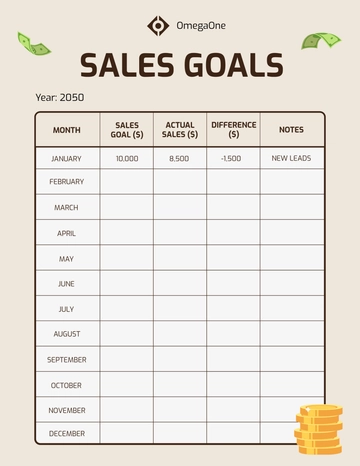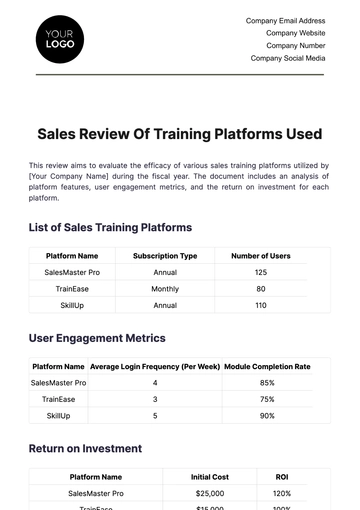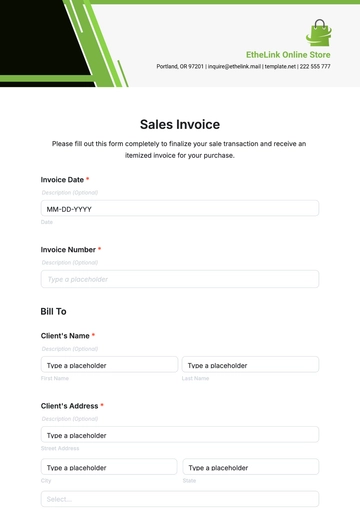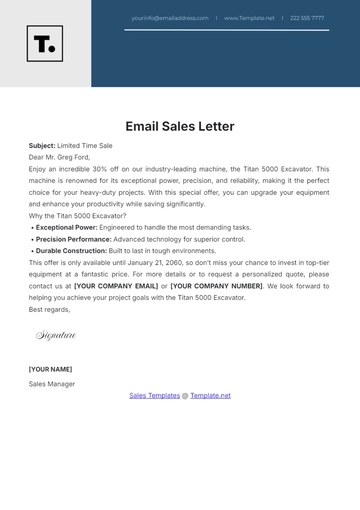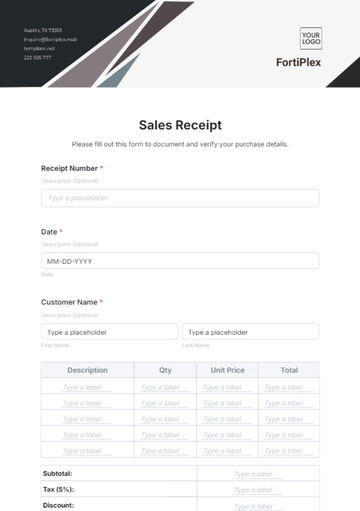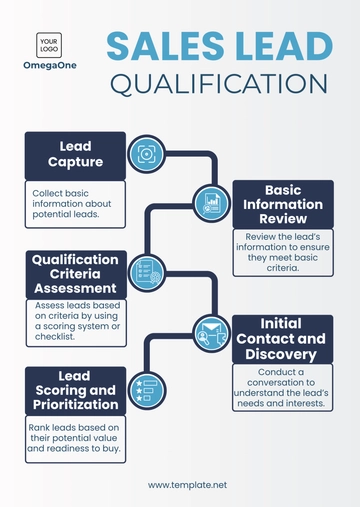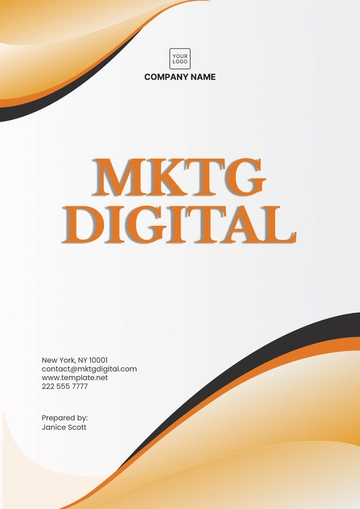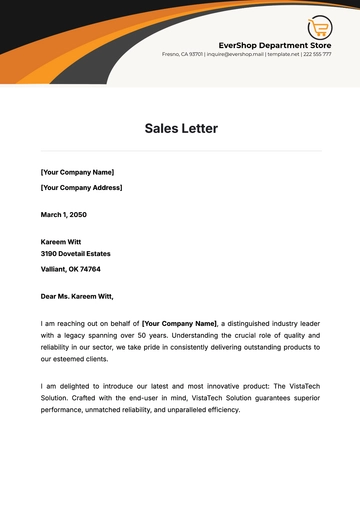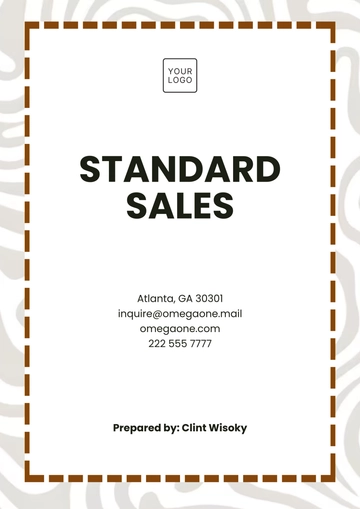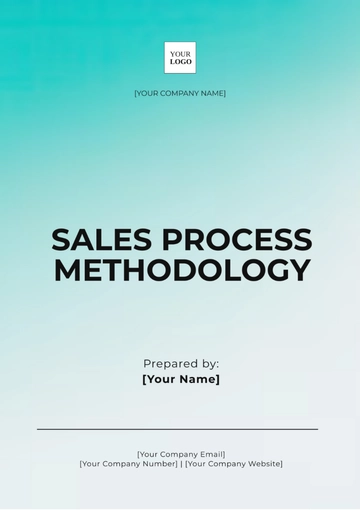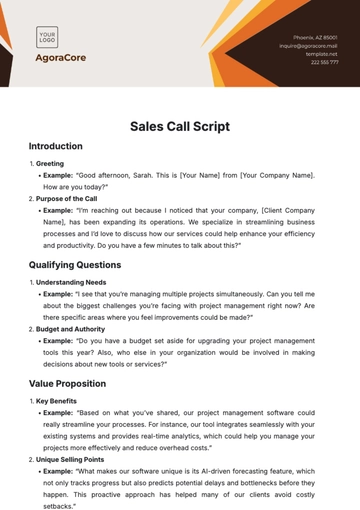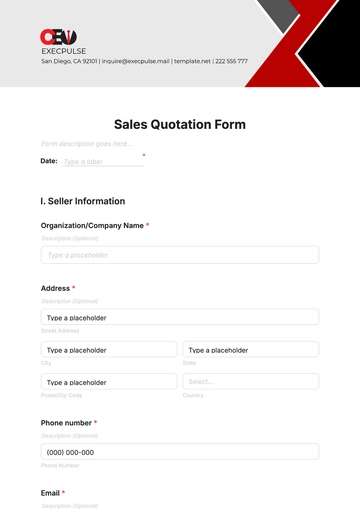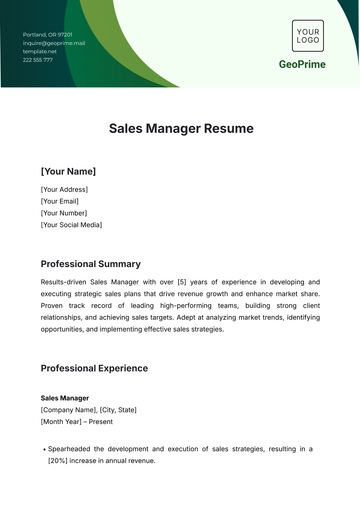Free Hotel Sales SOP
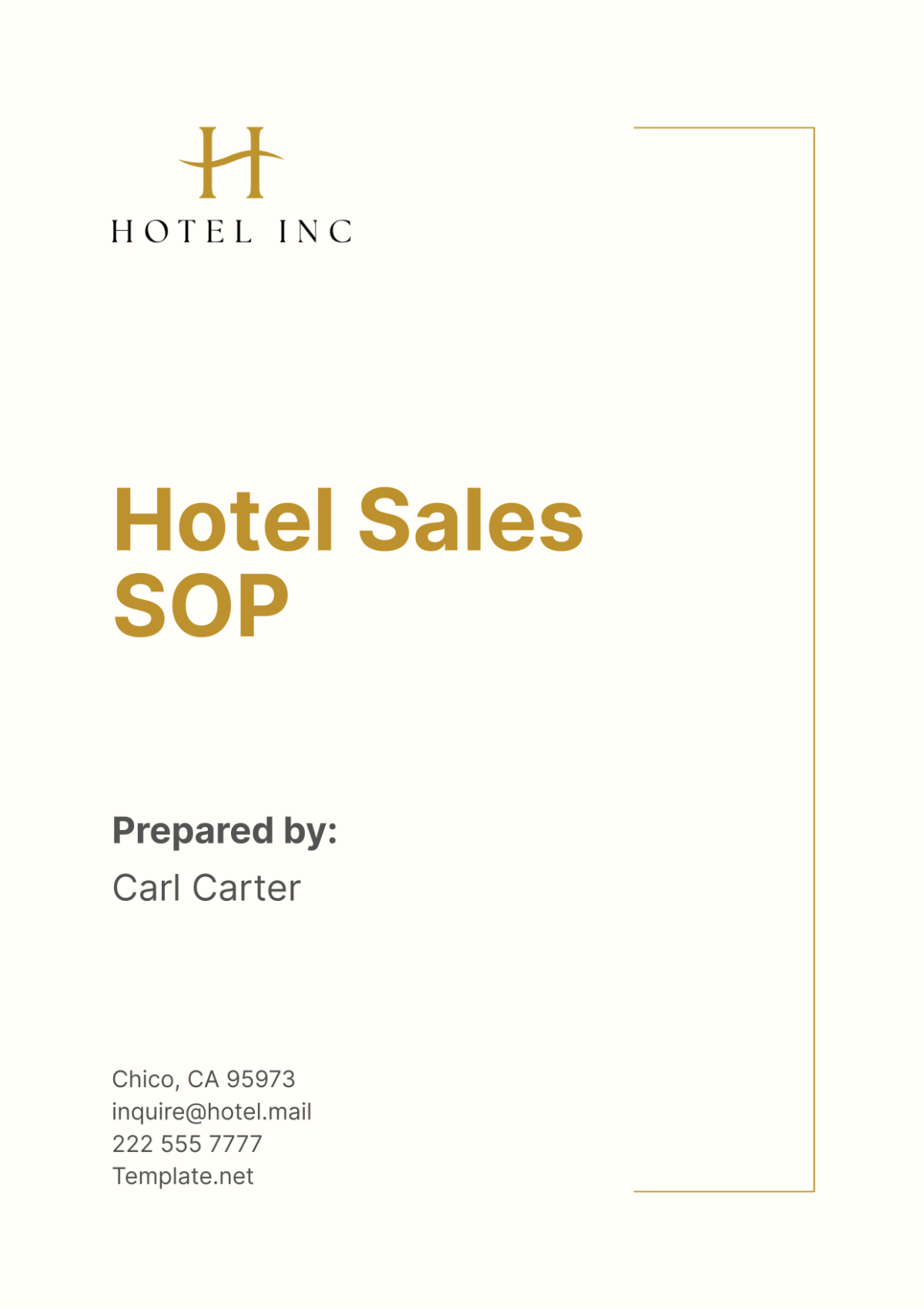
I. Purpose
The purpose of this Standard Operating Procedure (SOP) is to define the process and guidelines for the hotel sales department of [Your Company Name]. This SOP aims to ensure consistency, efficiency, and high-quality service in all sales-related activities. By having a standardized approach, we aim to achieve several critical objectives:
Consistency in Service Delivery: Establishing clear procedures ensures that all sales team members follow the same processes, leading to consistent service delivery. This consistency is vital in maintaining the hotel's reputation and ensuring that clients receive the same high-quality experience regardless of who they interact with.
Efficiency in Operations: Well-defined procedures help streamline operations by reducing ambiguities and preventing errors. This efficiency translates to quicker response times, better resource management, and ultimately higher sales performance.
Quality Assurance: Implementing standardized procedures allows for better monitoring and quality control. By following the SOP, employees can ensure that all aspects of the sales process meet the hotel's standards and client expectations.
Compliance with Regulations: Adhering to standardized procedures ensures compliance with relevant labor laws, industry regulations, and internal policies. This compliance helps mitigate risks associated with legal and regulatory breaches.
Training and Development: A detailed SOP serves as a valuable training tool for new employees, providing them with clear guidelines and expectations. It also helps in ongoing training and development efforts by highlighting best practices and standard processes.
II. Scope
This SOP applies to all employees in the hotel sales department of [Your Company Name], including but not limited to Sales Managers, Sales Executives, and Sales Coordinators. It covers all aspects of the sales process, from lead generation to post-sale follow-up, ensuring a standardized approach across the department.
Sales Managers: Responsible for overseeing the sales team and ensuring that all members adhere to the SOP. Their role includes strategy development, client relationship management, and performance reporting.
Sales Executives: Tasked with executing sales strategies, identifying potential clients, and converting leads into clients. They handle direct client interactions and are crucial in maintaining the sales pipeline.
Sales Coordinators: Provide administrative support to the sales team, ensuring that all documentation, scheduling, and follow-up activities are handled efficiently. Their role is vital in maintaining the organizational aspects of the sales process.
By defining the roles and responsibilities within the sales department, the SOP ensures that each team member understands their duties and how they contribute to the overall sales goals of [Your Company Name].
III. Roles and Responsibilities
Clear delineation of roles and responsibilities is essential for the effective functioning of the sales department. This section outlines the specific duties of each role within the team, ensuring accountability and streamlined operations.
1. Sales Manager
Oversee the sales team and ensure they meet their targets: The Sales Manager is responsible for setting realistic and achievable targets for the sales team. They must monitor performance regularly and provide guidance to ensure targets are met.
Develop and implement sales strategies: Crafting effective sales strategies involves understanding market trends, analyzing competitor activities, and identifying opportunities for growth. The Sales Manager must develop comprehensive plans that align with the hotel's overall business objectives.
Maintain relationships with key clients: Building and maintaining strong relationships with key clients is crucial for long-term success. The Sales Manager must engage with top clients, understand their needs, and ensure their satisfaction to foster loyalty.
Report sales performance to upper management: Regular reporting is necessary to keep upper management informed about sales activities and performance. The Sales Manager must prepare detailed reports, highlighting successes, challenges, and areas for improvement.
2. Sales Executive
Execute the sales strategies as directed by the Sales Manager: Sales Executives are responsible for implementing the strategies developed by the Sales Manager. This involves following specific plans and tactics to achieve sales targets.
Identify and approach potential clients: Identifying new business opportunities is a key responsibility of Sales Executives. They must proactively seek out potential clients through various channels, including online research, networking events, and trade shows.
Handle client inquiries and follow up on leads: Sales Executives must respond promptly to client inquiries, providing accurate information and addressing any concerns. Following up on leads is critical to converting prospects into clients.
Prepare sales presentations and proposals: Crafting compelling presentations and proposals is essential for persuading clients. Sales Executives must tailor their materials to meet the specific needs of each client, highlighting the benefits of the hotel's services.
3. Sales Coordinator
Assist the sales team with administrative tasks: The Sales Coordinator supports the sales team by handling various administrative duties. This includes managing correspondence, organizing files, and ensuring that all necessary documentation is in place.
Schedule client meetings and manage calendars: Effective scheduling is crucial for maintaining a smooth workflow. The Sales Coordinator must arrange client meetings, ensuring that all relevant parties are informed and available.
Prepare sales reports and maintain sales databases: Accurate and up-to-date reporting is vital for tracking sales activities and performance. The Sales Coordinator is responsible for compiling sales data, preparing reports, and maintaining the sales database.
Coordinate with other departments to fulfill client needs: Collaboration with other departments is often necessary to meet client requirements. The Sales Coordinator acts as a liaison, ensuring that all client needs are addressed promptly and efficiently.
Responsibilities Table
Role | Primary Responsibilities |
|---|---|
Sales Manager | Oversee team, develop strategies, maintain key client relationships, report to upper management |
Sales Executive | Execute strategies, identify clients, handle inquiries, prepare presentations |
Sales Coordinator | Assist with admin tasks, schedule meetings, prepare reports, coordinate with departments |
Benefits of Defined Roles
Accountability: Clearly defined roles ensure that each team member knows what is expected of them, fostering a sense of responsibility and accountability.
Efficiency: With specific duties assigned to each role, tasks can be completed more efficiently, reducing overlap and ensuring that all necessary activities are covered.
Team Cohesion: Understanding the responsibilities of each team member helps in building a cohesive team where everyone works together towards common goals.
Training and Development: Defined roles provide a clear framework for training new employees, ensuring that they understand their duties and how they fit into the overall sales process.
IV. Sales Process
The sales process at [Your Company Name] is designed to ensure a systematic and efficient approach to converting potential clients into loyal customers. This process involves multiple stages, each critical to achieving our sales targets and maintaining high standards of service.
1. Lead Generation
Lead generation is the first step in the sales process. The Sales Executive is responsible for identifying potential clients through various means such as online research, networking events, and trade shows. Effective lead generation requires a proactive approach and a keen understanding of the target market. Sales Executives should utilize tools like CRM systems to track and manage leads efficiently.
Techniques for Lead Generation
Online Research: Utilize search engines, social media platforms, and industry-specific websites to identify potential clients.
Networking Events: Attend industry conferences, seminars, and local business events to connect with potential clients.
Trade Shows: Participate in trade shows and exhibitions to showcase the hotel’s services and network with attendees.
2. Initial Contact
Once potential clients are identified, the Sales Executive will contact them via phone or email to introduce the services of [Your Company Name] and gauge interest. The initial contact is crucial for setting the tone of the relationship and should be handled professionally and courteously.
Best Practices for Initial Contact
Personalized Approach: Tailor the communication to address the specific needs and interests of the potential client.
Clear Communication: Clearly outline the purpose of the call or email and the value proposition of the hotel’s services.
Prompt Follow-Up: Follow up promptly if the potential client shows interest, ensuring they feel valued and important.
3. Needs Assessment
During the initial contact, the Sales Executive will assess the client's needs and determine how [Your Company Name] can meet those needs. This involves asking the right questions and actively listening to understand the client's requirements and preferences.
Conducting an Effective Needs Assessment
Open-Ended Questions: Ask questions that encourage the client to provide detailed information about their needs.
Active Listening: Pay close attention to the client's responses and take notes to ensure all details are captured accurately.
Needs Analysis: Analyze the information gathered to identify how the hotel’s services can address the client’s needs.
4. Proposal Development
Based on the needs assessment, the Sales Executive will prepare a tailored proposal outlining the services and pricing. The proposal should be comprehensive, clearly stating how [Your Company Name] can meet the client's needs and exceed their expectations.
Elements of a Winning Proposal
Customized Solutions: Tailor the proposal to address the specific needs and preferences of the client.
Clear and Concise: Ensure the proposal is easy to read and understand, avoiding jargon and complex language.
Value Proposition: Highlight the unique benefits and competitive advantages of the hotel’s services.
5. Negotiation and Closing
The Sales Executive will negotiate the terms and conditions with the client. This stage involves addressing any concerns the client may have and finding mutually agreeable terms. Once agreed upon, a contract will be signed to formalize the agreement.
Strategies for Successful Negotiation
Preparation: Enter negotiations with a clear understanding of the client’s needs and the hotel’s capabilities.
Flexibility: Be willing to adjust terms and conditions to meet the client’s requirements while maintaining profitability.
Clear Communication: Ensure all terms are clearly communicated and understood by both parties before finalizing the agreement.
6. Post-Sale Follow-Up
The Sales Coordinator will follow up with the client to ensure satisfaction and address any issues that may arise. Post-sale follow-up is essential for building long-term relationships and encouraging repeat business.
Effective Post-Sale Follow-Up
Timely Communication: Follow up shortly after the sale to thank the client and ensure everything is satisfactory.
Feedback Collection: Ask for feedback to identify areas for improvement and show the client that their opinion is valued.
Ongoing Support: Provide ongoing support to address any issues and maintain a positive relationship with the client.
Sales Process Flowchart
Stage | Responsible Role | Description | Tools Used |
|---|---|---|---|
Lead Generation | Sales Executive | Identifying potential clients through various means | CRM, Networking Events |
Initial Contact | Sales Executive | Contacting potential clients via phone or email | Email, Phone |
Needs Assessment | Sales Executive | Assessing client needs and determining service fit | CRM, Client Meetings |
Proposal Development | Sales Executive | Preparing tailored proposals | Proposal Software |
Negotiation & Closing | Sales Executive | Negotiating terms and formalizing the agreement | Contract Management |
Post-Sale Follow-Up | Sales Coordinator | Ensuring client satisfaction and addressing issues | CRM, Feedback Forms |
V. Reporting and Documentation
Accurate and timely reporting and documentation are critical for monitoring sales activities, assessing performance, and making informed decisions. All sales activities must be documented using the company’s CRM system. Weekly sales reports should be submitted to the Sales Manager, who will compile a monthly report for upper management.
Reporting Structure
A well-structured reporting system ensures that all relevant information is captured and communicated effectively. This helps in tracking progress, identifying trends, and addressing issues promptly.
Report Type | Frequency | Prepared By | Submitted To |
|---|---|---|---|
Daily Activity Report | Daily | Sales Executive | Sales Manager |
Weekly Sales Report | Weekly | Sales Executive | Sales Manager |
Monthly Performance Report | Monthly | Sales Manager | Upper Management |
Daily Activity Report
Content: Details of daily sales activities, client interactions, and follow-ups.
Purpose: To provide a real-time snapshot of daily sales efforts and identify any immediate issues that need addressing.
Weekly Sales Report
Content: Summary of weekly activities, new leads generated, conversion rates, and key achievements.
Purpose: To review the weekly progress and adjust strategies as needed to meet targets.
Monthly Performance Report
Content: Comprehensive analysis of monthly sales performance, including total sales, performance against targets, and insights into trends.
Purpose: To provide upper management with a detailed overview of sales performance and inform strategic decisions.
Documentation Requirements
Proper documentation ensures that all client interactions and sales activities are recorded accurately, facilitating transparency and accountability.
Required Documentation
Client Information: Detailed records of client interactions, needs, and agreements. This includes contact details, communication logs, and client preferences.
Sales Proposals: Copies of all proposals and contracts. Each proposal should be tailored to the client’s needs and clearly outline the services offered and pricing.
Activity Logs: Daily logs of sales activities and client follow-ups. These logs help in tracking progress and ensuring that all leads are followed up on promptly.
Performance Metrics: Regular updates on KPIs and sales targets. Tracking these metrics helps in assessing the effectiveness of sales strategies and identifying areas for improvement.
VI. Performance Metrics
Key Performance Indicators (KPIs) for the sales team are essential for measuring success and identifying areas for improvement. These metrics provide a clear picture of how well the sales team is performing and highlight areas that require attention.
Key Performance Indicators
Number of New Leads Generated
Target: 50 leads per month
Tracking Method: CRM system
Importance: Generating new leads is crucial for maintaining a healthy sales pipeline and ensuring continued growth.
Conversion Rate of Leads to Clients
Target: 20%
Tracking Method: CRM system
Importance: A high conversion rate indicates the effectiveness of the sales process and the ability to turn prospects into paying clients.
Monthly Sales Revenue
Target: $200,000
Tracking Method: Financial reporting software
Importance: Monthly sales revenue is a direct measure of the financial success of the sales team and the hotel.
Client Satisfaction Scores
Target: 90% satisfaction rating
Tracking Method: Client feedback surveys
Importance: High client satisfaction scores indicate that the sales team is meeting or exceeding client expectations, leading to repeat business and referrals.
KPI Table
KPI | Target | Tracking Method |
|---|---|---|
Number of New Leads | 50 leads/month | CRM system |
Conversion Rate | 20% | CRM system |
Monthly Sales Revenue | $200,000 | Financial reporting software |
Client Satisfaction Scores | 90% | Client feedback surveys |
Monitoring and Analysis
Regular monitoring and analysis of these KPIs are crucial for maintaining high performance and identifying areas for improvement.
Monthly Reviews: Conduct monthly reviews of performance metrics to assess progress and identify trends.
Performance Meetings: Hold regular performance meetings with the sales team to discuss results, share insights, and develop action plans for improvement.
Feedback Loop: Establish a feedback loop where performance data is used to inform training and development initiatives, ensuring continuous improvement.
VII. Review and Compliance
Ensuring the effectiveness and relevance of this Standard Operating Procedure (SOP) is crucial for the continuous improvement and success of the hotel sales department at [Your Company Name]. This chapter outlines the processes and responsibilities involved in reviewing and maintaining compliance with the SOP.
Annual SOP Review
The SOP will be reviewed annually to ensure it remains current with company policies, industry standards, and regulatory requirements. The annual review process is designed to identify any outdated practices, incorporate new strategies, and ensure alignment with the hotel’s strategic goals.
Steps for Annual SOP Review:
Initiation: The Sales Manager will initiate the SOP review process at the beginning of the fiscal year.
Collaboration: A review committee, consisting of the Sales Manager, Sales Executives, and representatives from the HR and Legal departments, will be formed to conduct a comprehensive review.
Feedback Collection: Input from sales staff and other stakeholders will be solicited to identify practical challenges and suggestions for improvement.
Analysis: The committee will analyze the collected feedback, compare current practices with industry benchmarks, and evaluate compliance with relevant regulations.
Update Drafting: Based on the analysis, necessary updates will be drafted, ensuring clarity and relevance.
Approval: The updated SOP draft will be submitted to upper management for approval.
Implementation: Once approved, the updated SOP will be communicated to all relevant stakeholders and integrated into the sales operations.
Compliance Audits
In addition to the annual review, compliance audits will be conducted to ensure adherence to the SOP and identify any deviations. These audits help in maintaining the integrity of sales practices and ensuring continuous improvement.
Steps for Compliance Audits:
Scheduling: Compliance audits will be scheduled annually by the Internal Audit Team.
Audit Team Formation: A team of internal auditors, including representatives from the sales, HR, and finance departments, will be assembled.
Audit Execution: The audit team will conduct thorough checks of sales processes, documentation, and performance metrics to ensure compliance with the SOP.
Reporting: The findings of the audit will be documented in a detailed report, highlighting areas of non-compliance and recommendations for corrective actions.
Follow-Up: The Sales Manager will ensure that corrective actions are implemented, and progress is monitored until full compliance is achieved.
Employee Training Update
Regular updates to employee training programs are essential to ensure that staff are knowledgeable about the latest SOP guidelines and best practices. Training updates will be conducted bi-annually to keep the sales team informed and skilled.
Steps for Employee Training Updates:
Needs Assessment: The HR Department, in collaboration with the Sales Manager, will assess training needs based on performance reviews, feedback, and changes to the SOP.
Program Development: Updated training materials and programs will be developed, focusing on new SOP guidelines, sales techniques, and compliance requirements.
Training Sessions: Bi-annual training sessions will be organized, covering both theoretical and practical aspects of the updated SOP.
Evaluation: The effectiveness of the training sessions will be evaluated through assessments and feedback from participants.
Client Feedback Analysis
Client feedback is a valuable source of information for improving sales practices and ensuring compliance with the SOP. Quarterly analysis of client feedback will help in identifying trends, addressing issues, and enhancing client satisfaction.
Steps for Client Feedback Analysis:
Feedback Collection: Client feedback will be collected through surveys, feedback forms, and direct interactions.
Data Analysis: The Sales Coordinator will analyze the feedback data to identify common themes, issues, and areas for improvement.
Reporting: A quarterly report will be prepared, summarizing the findings and recommendations based on client feedback.
Action Plan: The Sales Manager will develop an action plan to address the identified issues and implement improvements.
Compliance Checklist
To ensure that all review and compliance activities are conducted systematically, a compliance checklist will be used. This checklist outlines the key review items, their frequency, and the responsible parties.
Review Item | Frequency | Responsible Party |
|---|---|---|
SOP Review | Annually | Sales Manager |
Compliance Audit | Annually | Internal Audit Team |
Employee Training Update | Bi-Annually | HR Department |
Client Feedback Analysis | Quarterly | Sales Coordinator |
Communication of Updates
Effective communication of any updates or changes to the SOP is crucial for maintaining compliance and operational efficiency. All updates will be communicated to relevant stakeholders through formal channels such as email notifications, internal meetings, and training sessions.
Steps for Communicating Updates:
Notification: A formal email notification will be sent to all sales department employees, informing them of the updates and providing access to the revised SOP.
Meetings: Internal meetings will be held to discuss the updates in detail, ensuring that all employees understand the changes and their implications.
Training: Training sessions will be organized to familiarize employees with the updated SOP and address any questions or concerns.
Documentation: All communications and training sessions will be documented to ensure that the process is transparent and verifiable.
Contact Information
For any questions or concerns regarding this SOP, employees are encouraged to contact the relevant department for assistance. Providing clear contact information ensures that employees can easily seek guidance and clarification when needed.
Contact Details:
Department: [Your Department]
Email: [Your Company Email]
Phone: [Your Company Number]
- 100% Customizable, free editor
- Access 1 Million+ Templates, photo’s & graphics
- Download or share as a template
- Click and replace photos, graphics, text, backgrounds
- Resize, crop, AI write & more
- Access advanced editor
Unlock the power of efficient sales operations in your hotel with the Hotel Sales SOP Template from Template.net. Seamlessly streamline your sales processes with this comprehensive template, designed to optimize efficiency and boost revenue. Editable and customizable with our AI editor tool, tailor it to fit your hotel's specific needs effortlessly. Elevate your sales strategy and drive success today!





